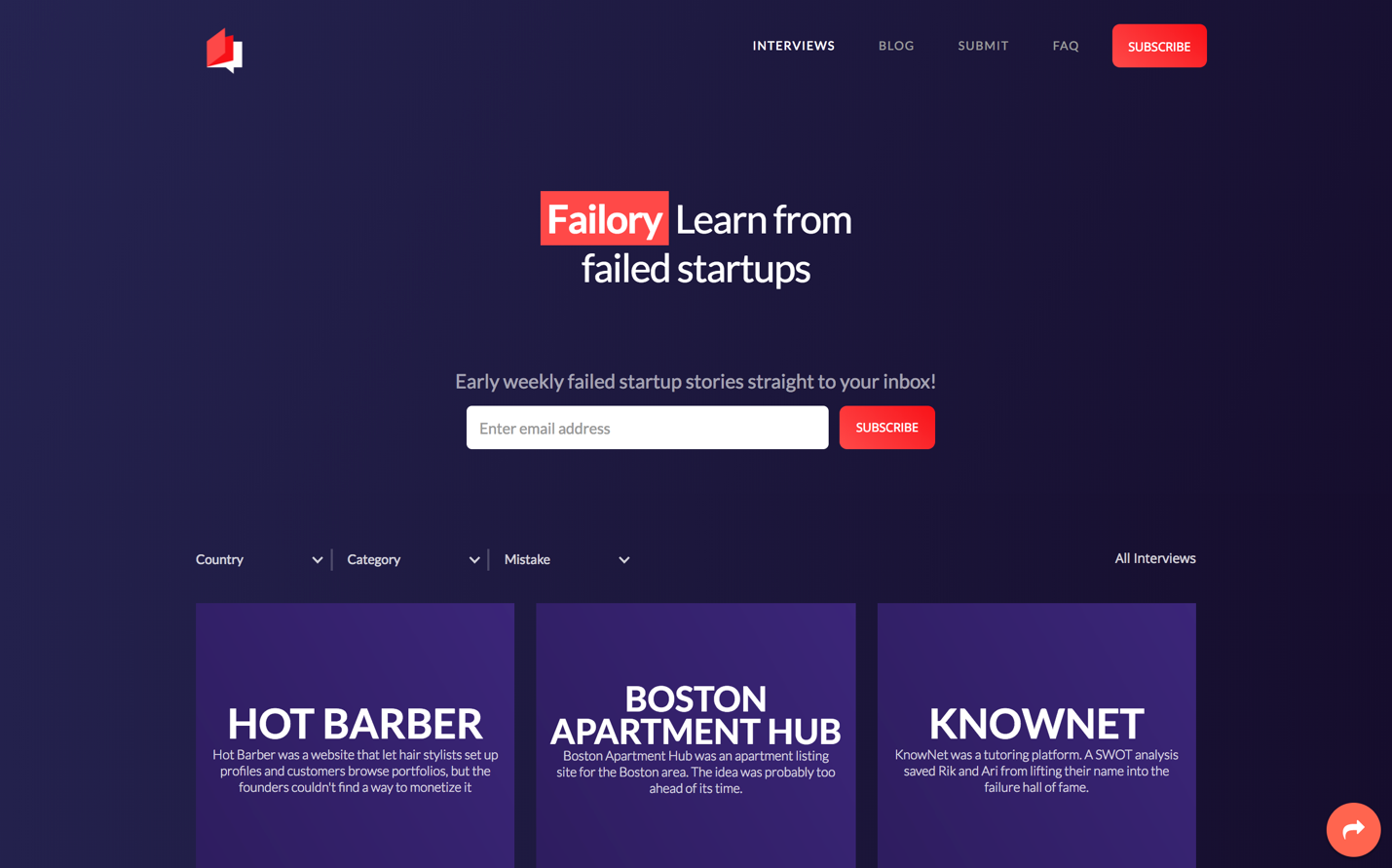He Built A Profitable Website Dedicated To Sharing Why Businesses Fail
Hi! Tell me about you and your business.
Hey! My name is Rich Clominson and I am the co-founder of Failory.
Failory is a community where failed startup owners come to tell their failure stories and the mistakes they committed, so that future entrepreneurs can learn from them and not make the same errors. Quite similar to Starter Story, but instead of success stories, we talk about the failed ones.
Until now, we haven’t made any money from Failory. But we are looking to do it in a near future. Our plans to monetize our project is with sponsorships and affiliate marketing on our email newsletter. But before starting doing this, we are trying to increase the community, launch new interviews and get more email subscribers.

What's your backstory and how did you come up with the idea?
I studied Marketing in Argentina and over the years I decided to focus on Digital Marketing. That’s exactly what I do on...

Download the report and join our email newsletter packed with business ideas and money-making opportunities, backed by real-life case studies.

Download the report and join our email newsletter packed with business ideas and money-making opportunities, backed by real-life case studies.

Download the report and join our email newsletter packed with business ideas and money-making opportunities, backed by real-life case studies.

Download the report and join our email newsletter packed with business ideas and money-making opportunities, backed by real-life case studies.

Download the report and join our email newsletter packed with business ideas and money-making opportunities, backed by real-life case studies.

Download the report and join our email newsletter packed with business ideas and money-making opportunities, backed by real-life case studies.

Download the report and join our email newsletter packed with business ideas and money-making opportunities, backed by real-life case studies.

Download the report and join our email newsletter packed with business ideas and money-making opportunities, backed by real-life case studies.














